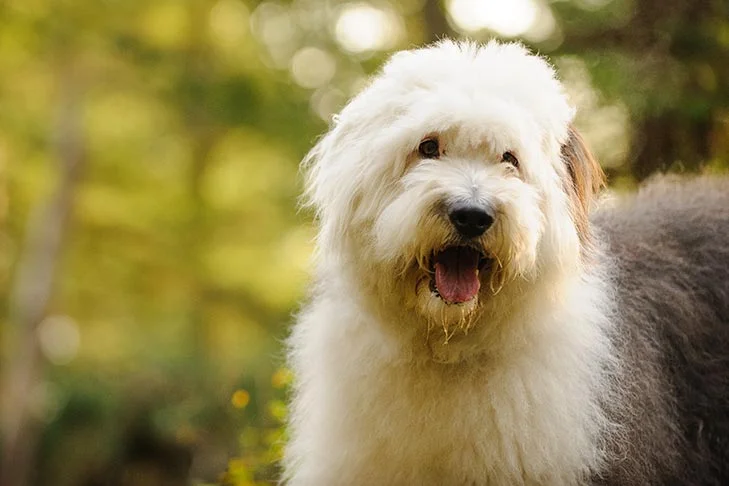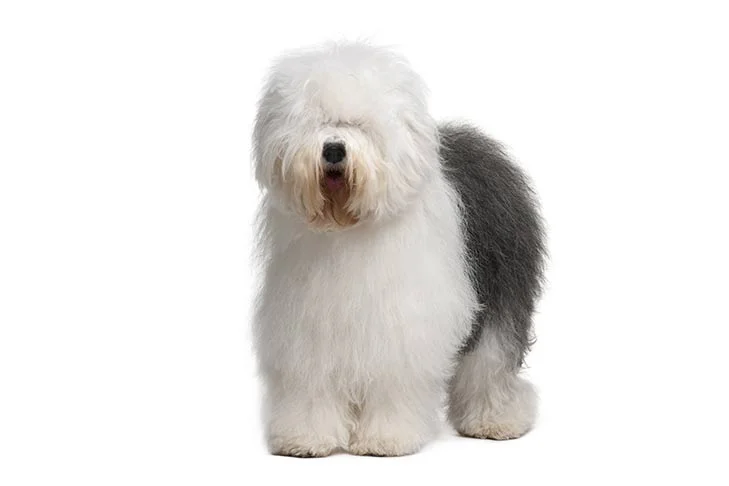The Old English Sheepdog is the archetypal shaggy dog, with a thick coat and peek-a-boo haircut, a characteristic bear-like stride, and a calm, amiable personality. The OES is a large, athletic dog who enjoys exploring and romping.
Under the thick double coat of the Old English Sheepdog lies a muscular and compact drover with plenty of bone and a big rump, standing 21 or 22 inches at the shoulder. Their eyes (when you can see them) are dark brown, blue, or a combination of the two. According to the OES breed standard, the head is ‘capacious and somewhat squarely built, offering lots of capacity for brain power.’ OES move with a bear-like shuffle but are known for their nimbleness on the ground. Regular exercise is necessary for these physically fit workers. Their many fine-housedog qualities are also well-known: watchfulness, courage, kindness, and intelligence. OES are excellent playmates for youngsters since they are patient and protective. They are responsible watchdogs with a powerful, ringing bark.






 Health
Health Grooming
Grooming Exercise
Exercise Training
Training Nutrition
Nutrition